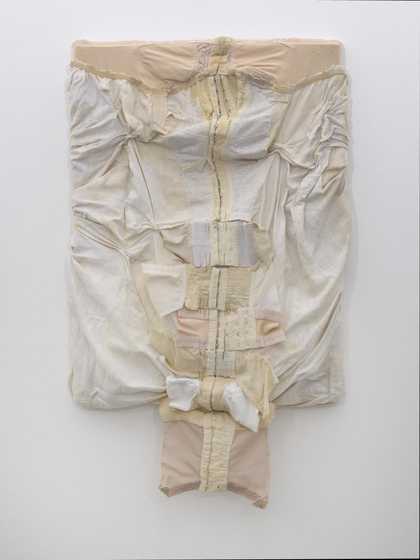Made using pieces of clothing, Patricia Belli's works carry memories of the body and identity
To create these works, Patricia Belli layered, stitched and patched together textiles and used pieces of women's clothing. She then stretched the fabrics onto frames or attached them to a canvas.
Hanging on the wall, the reworked pieces of clothing become almost sculptural. In some ways, these are portraits, with the clothing carrying memories of the people who used to wear them. Belli questions the connection between clothing,binary gender roles and identity. The distorted forms also draw attention to the inequality of domestic labour. Belli's extreme manipulation of the original fabrics, and her use of corsets and stockings, relates to the ways in which women's bodies are shaped and objectified. They can also be seen as an act of resistance or rebellion.
These wall pieces were made in the 1990s. This was after a period of civil war and revolution in Nicaragua. In this context the cut and patched materials may evoke the experience of violence and trauma. From a time of unrest, they could also suggest endurance and survival.

